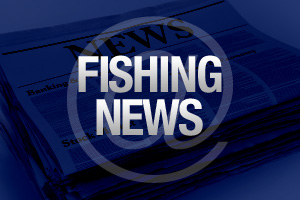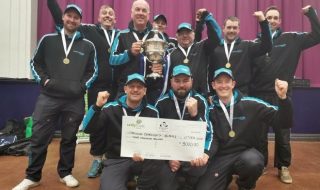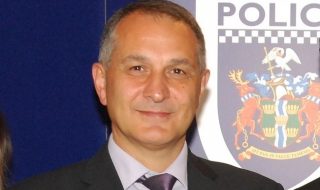ICES advises zero catches of cod and other fish stocks
This week, scientists from ICES will give more strong recommendations to the European Commission, NEAFC[1] and national governments to reduce fishing pressure—particularly on cod stocks in the North Sea, Irish Sea and west of Scotland, which are still at very low levels.
In a report which will officially be released on Friday 24 October 2003, ICES will advise that there should be zero catches of cod in these areas until the stocks have had a chance to recover (see Table 1 below). This advice covers not just fisheries that target cod in these areas but also fisheries that catch cod as a by-catch.
David Griffith, General Secretary of ICES said today; “Along with many other stocks, cod in the North Sea, Irish Sea and west of Scotland have been declining for a number of years; despite our repeated warnings. These cod stocks are at such low levels that we have had to resort to recommending zero catches as a final line in the sand, to give them some respite. If they are given the chance to return to their former productive states now, we hope that in the future they will be able to support valuable fisheries again.”
North Sea plaice
In the report, the scientists will also express concerns about the status of North Sea plaice which is also close to all-time historical low levels. As well as the fact that fishing pressure is too high, one of the major issues for plaice is that it is caught in mixed fisheries together with sole, and unfortunately many plaice are discarded—in the mixed beam trawl fishery in southern North Sea up to 80% (in number) of plaice that are caught, are discarded. ICES will therefore advise that a rebuilding plan should be implemented for this stock along with measures to reduce discarding in the mixed beam trawl fishery.
Irish Sea whiting
In the Irish Sea, whiting is another stock that is close to historical low levels and ICES will give similar stark advice: zero catch until the stock has had a chance to recover.
Hake
There is also concern about hake stocks. Hake are a cod-like fish that are mainly caught from the west coast of Ireland down through the Bay of Biscay to the west coast of Portugal. ICES will advise that recovery plans should be put in place across the fish’s range and that for southern stocks—South Biscay and further south—there should be zero catch until the stock has had a chance to recover.
Capelin
For capelin stocks, further north in the Barents Sea, scientists will also advise zero catches. This stock has recently suffered from a series of poor year classes and even without any fishing, scientists forecast that it is likely to fall below minimum recommended levels in 2004. Capelin stocks naturally show strong up and down fluctuations and scientists are hopeful that this stock will recover from low levels as it has always done in the past.
North Sea haddock, saithe, Norway pout and Northeast Atlantic mackerel,
The scientist’s findings are not all negative and there are some stocks that are healthy and even increasing. As one example, the North Sea haddock stock is the highest it has been for thirty years. Although scientists stressed that this is only based on one good year class from 1999 and that since then recruitment of new fish to the stock has been weak which could lead to future problems. Other stocks in a healthy condition in the North Sea include Norway pout and saithe. The Northeast Atlantic mackerel stock is another example of a stock which is in good shape.
Table 1 Summary of preliminary advice for North Sea cod and other “at risk” stocks:
Area | Minimum recommended stock size | Estimated stock size in 2003 | ICES Advice |
Cod – North Sea & Skagerrak, Eastern Channel | 150,000t | 52,000t | Zero catch until stock above 70,000t. Then implement rebuilding plan to build stock up to 150,000t. |
Cod – Irish Sea | 10,000t. | Stock just above 6000t in 2003. Forecast to decline below this level in 2004. | Zero catch until stock above 6000t. Then implement rebuilding plan to build stock up to 10,000t. |
Cod – west of Scotland | 22,000t. | 2500t | Zero catch until stock above 14,000t. Then implement rebuilding plan to build stock up to 22,000t. |
Plaice – North Sea | 300,000t | 152,000t | Implement rebuilding plan to build stock up to 300,000t. |
Whiting – Irish Sea | 7,000t | 1,700t | Zero catch until stock above 5,000t Implement rebuilding plan to build stock up to 7,000t. |
Hake – Ireland down to Portugal | Northern stock: 140,000t Southern stock: 35,000t | Northern stock: 114,100t Southern stock:
16,000t | Northern hake – rebuilding plan to build stock up to 140,000t.
Zero catch for Southern hake and rebuilding plan to build stock up to 35,000t. |
Capelin – Barents Sea | 200,000t | Stock 280,000t in 2003 but forecast to drop to 90,000t in 2004. | Zero catch in 2004. |
What does “below minimum recommended levels mean”?
When a stock is below minimum recommended levels it is being fished too hard, the fish are not being given enough chance to reproduce and the stock may not be as productive in the ecosystem as it should be. This does not necessarily mean that the stock will become extinct but it does mean that the current fishery needs to be reduced to more sustainable levels.
The full report on cod and other fish stocks in the northeast Atlantic will be available on the ICES website as a series of pdf files on 24 October 2003 (http://www.ices.dk/committe/acfm/comwork/report/asp/acfmrep.asp )
The Advisory Committee on Fishery Management (ACFM) provides scientific information and advice on living resources and their harvesting. In formulating its advice on the management of ca. 135 stocks of fish and shellfish, ACFM uses information prepared by numerous ICES stock assessment Working Groups. ACFM consists of one scientist from each of the 19 ICES member countries along with chairs of relevant ICES science committees and observers from the European Commission, Faroe Islands/Greenland and the Northwest Atlantic Fisheries Organisation (NAFO). ACFM meets twice a year (summer and late autumn) to prepare its advice, which is published annually in the ICES Cooperative Research Report series. The advice is also available in pdf format on the ICES Website at www.ices.dk
International Council for the Exploration of the Sea
ICES is the organisation that coordinates and promotes marine research in the North Atlantic. This includes adjacent seas such as the Baltic Sea and North Sea. ICES acts as a meeting point for a community of more than 1600 marine scientists from 19 countries around the North Atlantic. Scientists working through ICES gather information about the marine ecosystem. As well as filling gaps in existing knowledge, this information is also developed into unbiased, non-political advice. The advice is then used by the 19 member countries, which fund and support ICES, to help them manage the North Atlantic Ocean and adjacent seas. The annual budget is 25 million dkk/3.3 million euro. ICES plans and coordinates marine research through a system of committees, more than 100 working groups, symposia, and an Annual Science Conference. Most meetings take place either at the ICES Headquarters in Copenhagen, Denmark, or in the member countries. ICES has been based in Copenhagen, Denmark, since 1902. Today, we have a Secretariat of 38 staff who provide scientific, administrative and secretarial support to the ICES Community of over 1600 marine scientists. http://www.ices.dk






